| 1 | A familiar face in California |
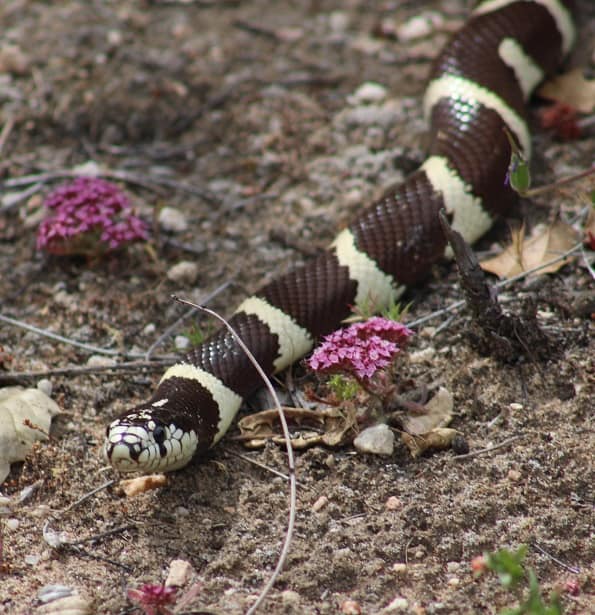
Nobody knows which snake in California is the most abundant by headcount. The gopher snake is a strong contender, as it’s the species responsible for the most calls to reptile controllers, but this is also because it resembles a rattlesnake. A strong contender for most common snake in California is the California kingsnake (Lampropeltis californiae), a smiling black and creamy-white species which averages at 77-108m.
This is a non-venomous species which dispatches its prey using constriction, with a particularly tight set of coils. California kingsnakes bite if severely pressured, but they have smallish teeth and the bite is little more than a pin prick. If you’re sitting on a picnic bench and stroke your pet dog, only to find your hand on a California kingsnake, there’s nothing to worry about.
California kingsnakes are flexible in their habitats, and can venture to just about anywhere they want. They can be found in grassland, woodlands, chaparral, semi desert and suburban areas alike. They’re very widespread and successful, inhabiting virtually the whole of California, with countless encounters around San Diego and San Francisco alike. They also inhabit all of Baja California (Mexico), southwest Oregon, the majority of Arizona, southern Nevada, extreme southwest Utah, and just cross the border into Sonora, Mexico. Whatever a snake needs to do to take over, the California kingsnake has achieved it.
| 2 | The world’s strongest constrictor |
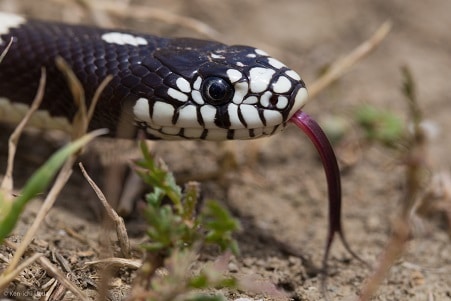
California kingsnakes are a happy, calm-looking snake when viewed up close, and they have a lot to be pleased about. This species sits at the top of the pile for constriction abilities, holding the record of most efficient squeezer pound for pound on Earth. The boa constrictor defeats them for raw force, but California kingsnakes are stronger in proportion to their body size (76-107cm).
A California kingsnake can constrict and kill a ratsnake 20% larger than themselves. In a study published in 2017, scientists from the University of Louisiana gathered 36 preserved snakes, including 3 species of kingsnake and 3 species of ratsnake. They analysed their musculature, and found that kingsnakes had no significant advantage in strength. They reached the same verdict in a separate experiment, where 98 restrained snakes were made to pull a harness. All 6 species had similar power.
Nevertheless, the third and final experiment revealed a strange truth. 182 living snakes were tempted with dead mice to eat, which they eagerly began to constrict. All 3 kingsnakes exerted significantly more pressure than the ratsnakes, and the California kingsnake was the strongest of all. It was all down to the coil formation. The kingsnakes used an elegant but highly efficient coiled spring, with multiple loops. The ratsnakes applied a couple of hasty, haphazard loops. The ratsnakes were like a beta model, while kingsnakes were the final, perfected evolutionary machine. The California kingsnake was found to exert double the constricting force of the weakest species tested, the western rat snake (Pantherophis obsoletus).
| 3 | A heavy snake eater |
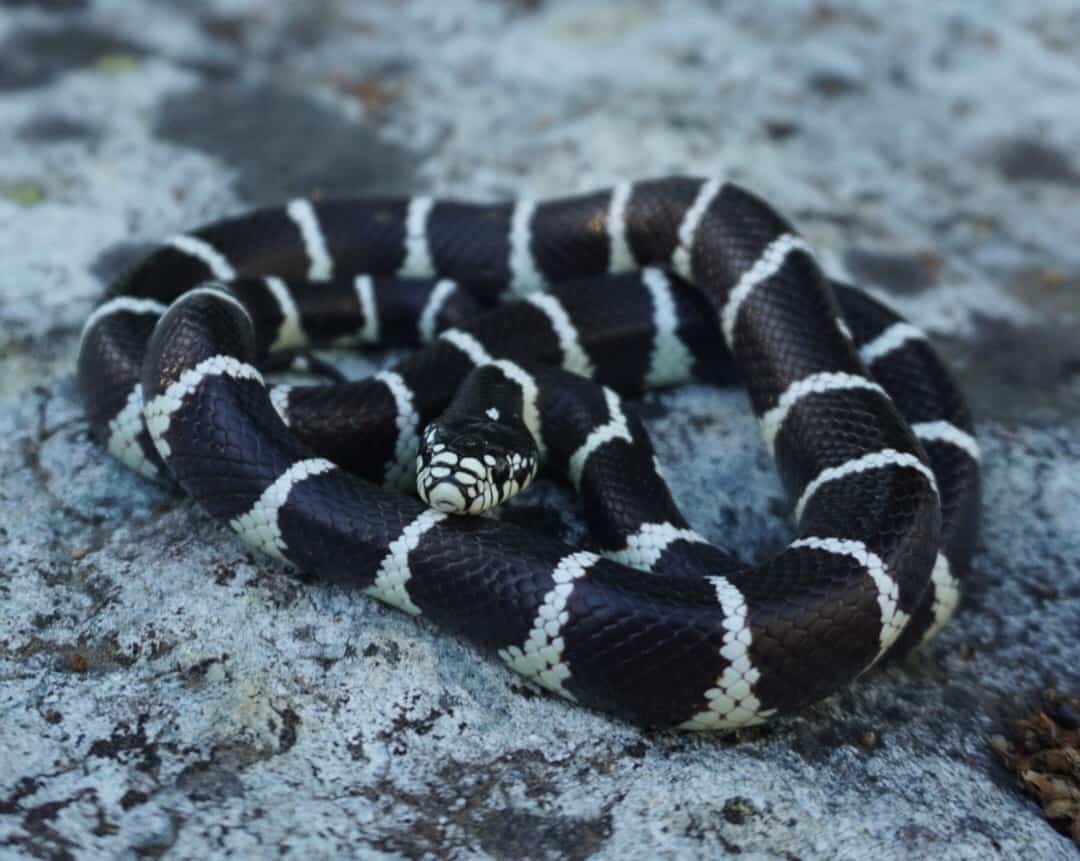
California kingsnakes have an extremely flexible diet, which is one reason for their success. Nothing is off limits, as a 2018 study covering 2662 California kingsnakes revealed. Using preserved museum specimens, it found a dietary breakdown of 29% mammals, 29% snakes, 25% lizards, 11% birds, 5% reptile eggs, and 1% amphibians.
However, going by total prey biomass in grams, snakes easily made up the largest share, at 45%. Mammals were second at 26%, followed by lizards at 14% and birds at 12%. The study even had a calorie count, with snakes making up an estimated 49% of calories across the 2662 kingsnakes. Mammals contributed 29% and lizards 15%.
In total, 129 snakes were identified, belonging to 31 separate species. One was clearly the most common, and that was the gopher snake (Pituophis canifer) which was eaten 24 times, and comprised 5% of total prey in the study. Western blind snakes (Rena humilis) were eaten 5 times, and other common meals were western yellow-bellied racers, coachwhips, and California striped whipsnakes.
| 4 | Capable of swallowing rattlesnakes |
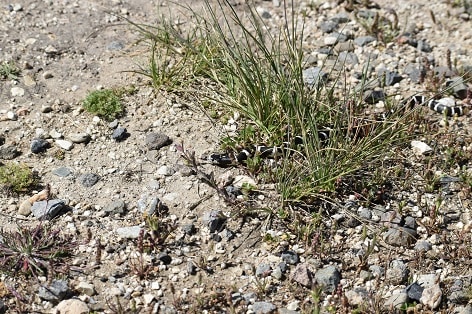
Then there was the rattlesnakes, with 7 different species eaten. The most common was the Pacific rattlesnake (17 times), the most widespread venomous species in California. Second was the sidewinder (3), while red diamond, great basin, and Mohave rattlesnakes were each eaten twice. Rattlesnakes made up 7% of prey by headcount, but a disproportionate 16% of total prey mass.
Most importantly, none of those kingsnakes rolled over and died. Swallowing an entire venom gland is just as dangerous as being bitten, but like other US kingsnakes, California kingsnakes have innate resistance. A 1992 study found strong resistance to the southern Pacific rattlesnake (Crotalus helleri). Interestingly, the striped morph had stronger venom resistance to rattlesnakes as a whole, though the banded morph was no slouch.
Meanwhile, 130 mammal prey were recorded, and the vast majority (111/130) were rodents. 111 lizards were recorded, the majority being fence lizards, spiny lizards and alligator lizards. It seems that Lampropeltis californiae falls victim to some sneaky tactics, as 9 had complete lizard tails in their bellies, but no lizard. These lizards had clearly used caudal autonomy – detaching their own tail to confuse the predator and make a bid for freedom. Snakes also use this strategy.
| 5 | Scours the land for prey |
California kingsnakes are active foragers. They’re not ambush snakes – their strategy is one of constant investigation. They spend hours investigating rodent burrows, cracks in walls, rock piles and wood piles, always while flecking their tongue inquisitively. They rely mainly on scent rather than vision, as one blind California kingsnake was still able to hunt successfully.
California kingsnakes mainly stick to the ground, but are still strong climbers and have been observed 6 meters above ground in willow trees. In the study above, California kingsnakes turned out to be a skilful bird’s nest raider. They were able to swallow a nestling bird while pinning a second below its coils simultaneously. Likewise for eggs; they usually swallowed one while keeping a second tightly in their coils. They also use a strategy called defensive body bridging, when they arch up the centre of their back to block the flight of adult birds, which are trying desperately to stop their schemes.
| 6 | There’s two main morphs |

California kingsnakes have a huge amount of morphs which seem to appear as if by random. The colours are mostly consistent, with a sharply contrasting mixture of night-time black and pale, creamy yellow. Their face is very distinctive, as the cream scales become more prominent, with black outlines, like a luxury piece of marbled chocolate.
The patterns are where things vary. There’s two basic morphs – banded, where the snake’s black body is encircled with creamy rings. Then there’s striped, with thin creamy lines extending down the length of their body (see above).
However, there’s also inbetween morphs, with the long stripes, but also round creamy markings dotted around. Occasionally, the black colours can be browner, and then there’s some where the encircling bands are extremely thin, so that black rules almost all. The reverse is also possible, with white pushing back the darkness. Many of these morphs intermingle in the same Californian neighbourhoods – check out this picture. Other ID signs include round black eyes and a purplish tongue.
| 7 | Lubricates its own belly |
In 2015, a study investigated how snakes are able to slither on their belly without ripping themselves to shreds. It was already known that the coefficient of friction is significantly lower on a snake’s belly compared to its back. Without lubrication, a snake’s belly would be scraped away, left ragged and torn, particularly given that many species (including California kingsnakes) live on rocky fields.
Scientists chose to analyse the California kingsnake, keeping them captive in the University of Oregon. Whenever the kingsnake shed its skin, samples were shipped over the Atlantic to the University of Kiel in Germany. Using advanced spectroscopy techniques, the scientists discovered that both the belly and back scales had a thin layer of grease, secreted naturally by the snake (rather than picked up from their environment). The quantity of the grease was roughly equal. However, the layer on the back had a far more disorganised structure, when viewed under a high powered microscope. The lipids were loosely organised, whereas on the belly, they were in a tightly organised formation.
A layer of fats this well structured was rare in nature, according to the scientists. Meanwhile, the morphology and roughness of scales was roughly the same between the kingsnake’s belly and back. This subtle grease film was the only variant. Additionally, the grease didn’t wear away, showing that the California kingsnake was constantly secreting it.
| 8 | An invasive species |
California kingsnakes are also one of the most dangerous invasive species in the world, on the sunny Spanish island of Gran Canaria. They were first introduced in 1998, through the pet trade. By 2007 they had an established population, and they’re now wreaking havoc on the island’s native reptiles. Gran Canaria has no native snakes, so the native animals had no defensive instincts to fall back on. They were completely unprepared, and in areas where California kingsnakes have a stronghold, the Gran Canaria giant lizard has fallen by 99%. The Gran Canaria skink has declined by 80%, while Boettger’s gecko has fallen by 50%.
The fightback is underway in earnest, with 1000 captured in the first 9 months of 2019. One possible plan is to introduce dead mice laced with paracetamol all over the island. Unlike mammals, reptiles lack the necessary enzymes to metabolise paracetamol (AKA acetaminophen), and snakes are the most ill-equipped of all. With no native snakes on Gran Canaria, there was no worry about hurting innocent snakes. The mice were laced with 40mg, 60mg or 80mg of acetaminophen, in a strategy already used to control invasive brown tree snakes on Guam.
The results were very encouraging (in a morbid way), as 40mg tablets killed 87.5% of California kingsnakes, while 60 and 80mg killed 100%. Another weird consequence of the invasion is that Gran Canaria giant lizards have grown bigger, in a case of rapid evolution, so that California kingsnakes are unable to unhinge their jaws wide enough to swallow them.
| 9 | A wrestling snake |
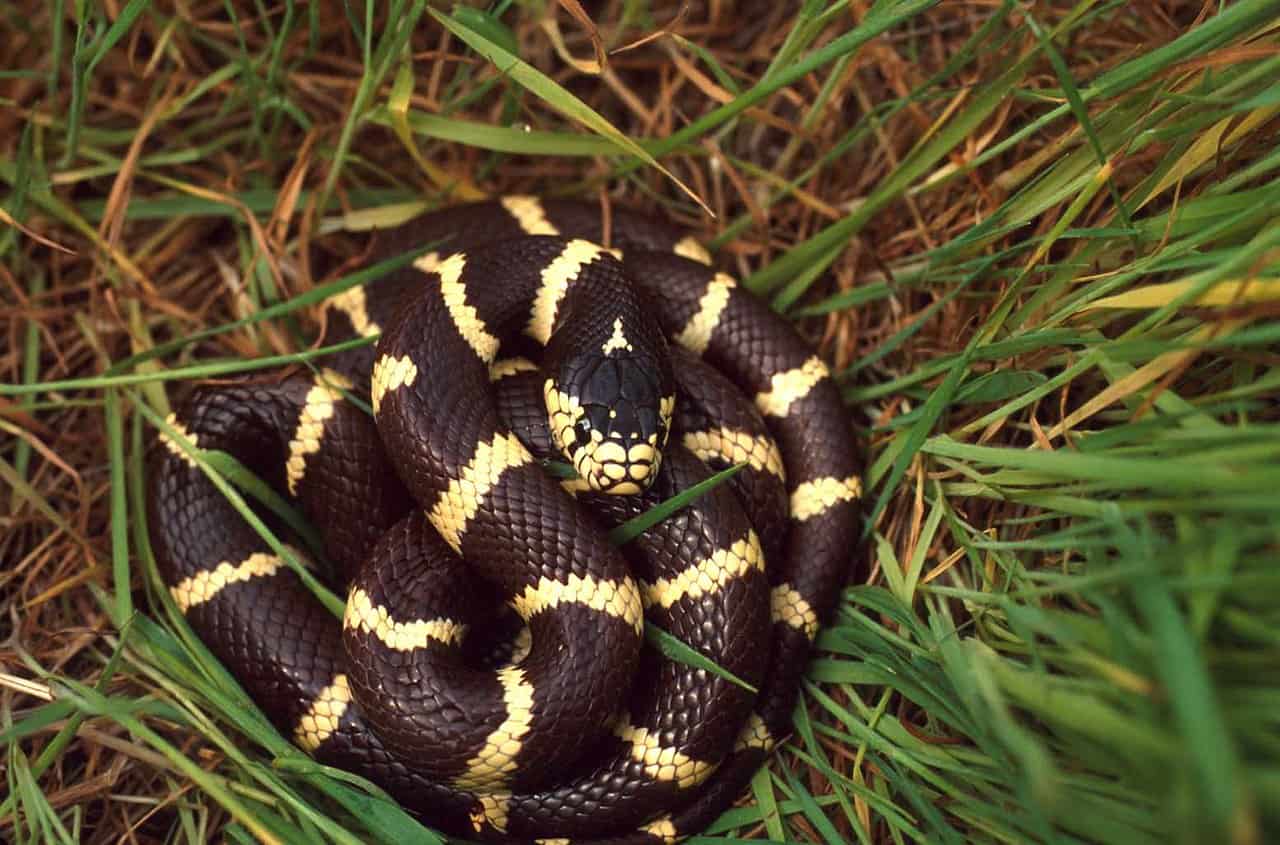
California kingsnakes can be seen exploring woodlands curiously, watching rivers flow by, or sitting proudly on a rock. If you’re really lucky, you’ll see them duelling in noble combat, as this is a species that practises male ritualised wrestling, which is unexplained, but most likely a scheme to win female attention.
The observation happened in Pinal County, Arizona in 2019, and started when a scientist found a lone California kingsnake (snake A) in a garden, lapping up water from a small pond. 20 minutes later, they returned to find two new California kingsnakes. Snakes A and B were locked in a furious wrestle, while snake C sat 1 metre away happily, completely relaxed. Snakes A and B were constantly intertwined, in a spiralling helix motion, ever twisting their necks.
They never bit each other, and after a few minutes, snake B slithered away into the brush. It then immediately met snake D, and commenced another brutal wrestling match, where each snake determinedly attempted to raise their head 5-10cm above the other’s, as though this was the mark of victory. At one point, a curve-billed thrasher flapped in and started pecking their tails, probably defending nestlings a few metres away, even though the snakes were highly distracted. Meanwhile, snake A and C had slithered away together. It’s likely that all except C were males, wrestling to establish rights to the female.
| 10 | Other kingsnakes in California |
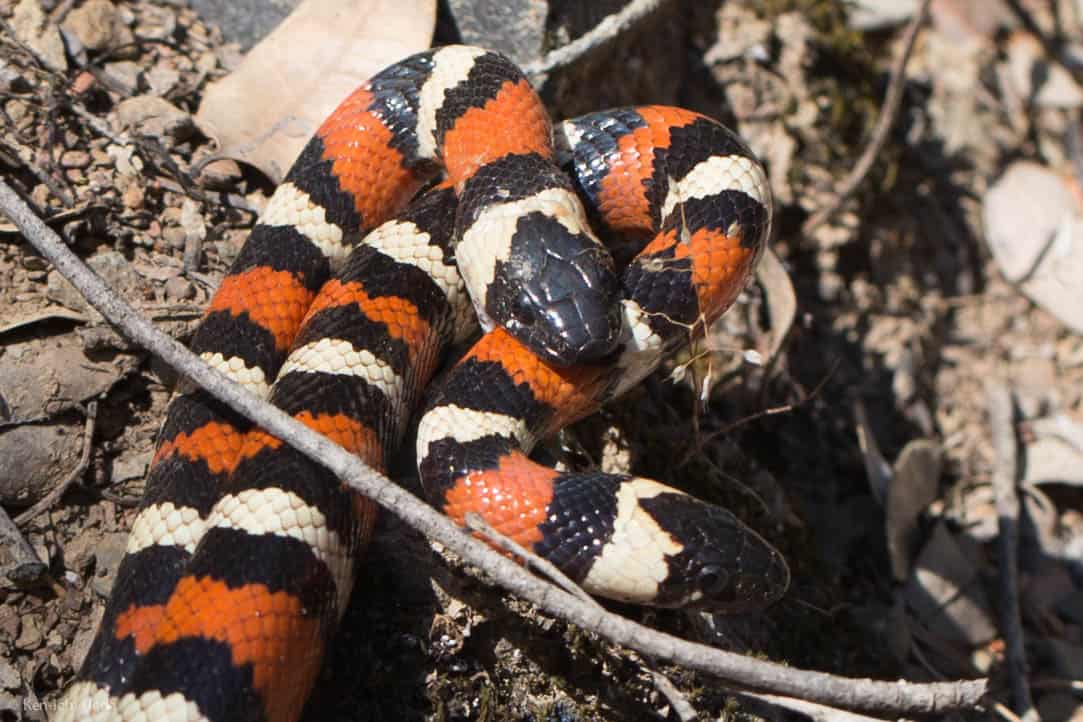
Lampropeltis californiae is an egg-laying species, which typically produces 5-12 per batch, occasionally over 20. These take 40-65 days to hatch. This species is very popular in captivity worldwide (hence why they invaded Gran Canara), as they’re both docile and incredibly easy to feed.
California kingsnakes are easily the main kingsnake species in their namesake state. They also have a population on Santa Catalina island, off the west coast near Los Angeles. This island is home to several obscure species, like the Santa Catalina rattlesnake (a rare species with no rattle), and the rare Santa Catalina kingsnake (Lampropeltis catalensis), of which only one male has ever been found.
The third kingsnake species in the state is the Californian mountain kingsnake (Lampropeltis zonata), which is more restricted, sticking to high altitude mountain areas such as the Sierra Nevada. This species has red black colours instead, and could never be confused with the California kingsnake.